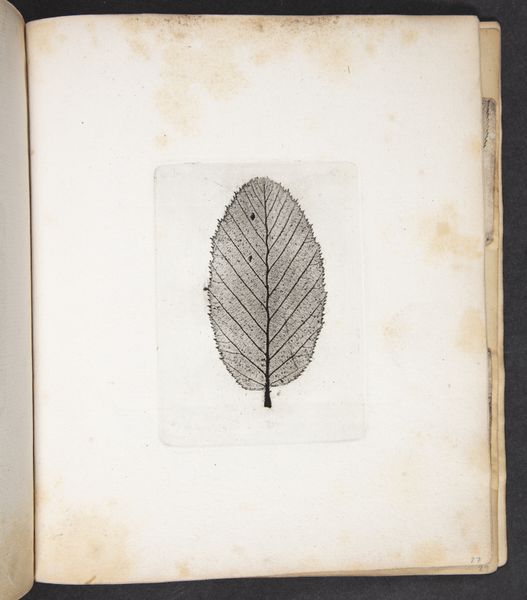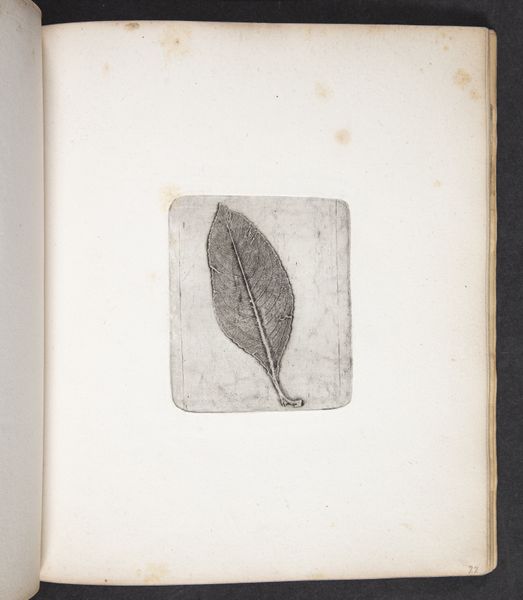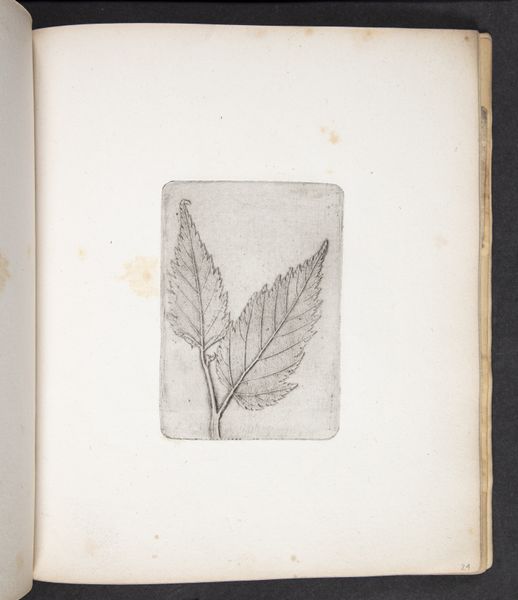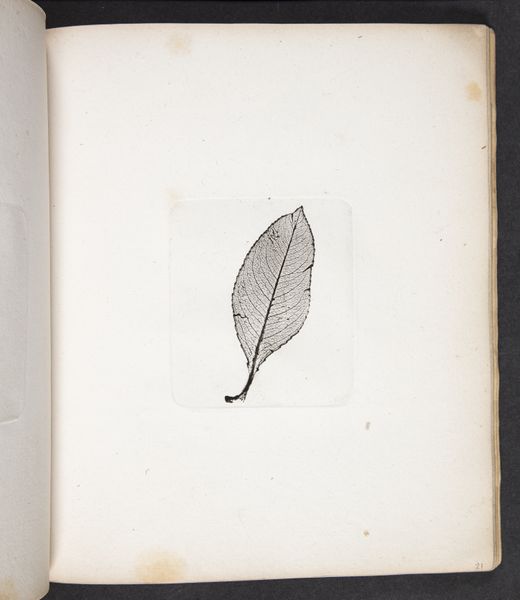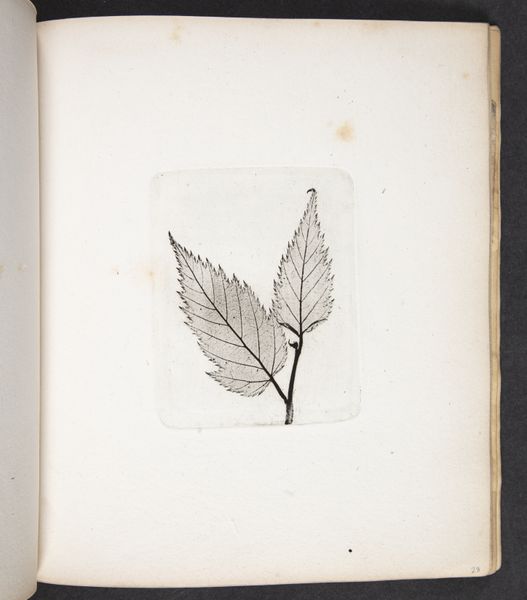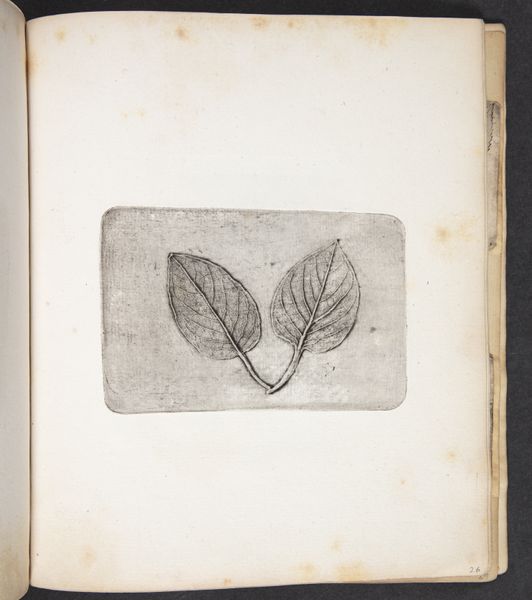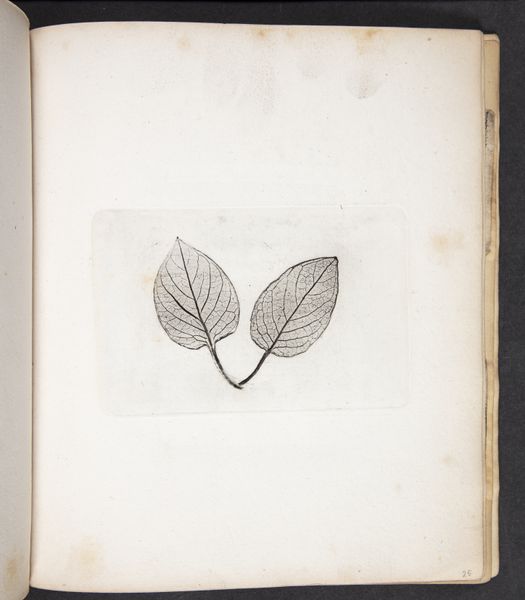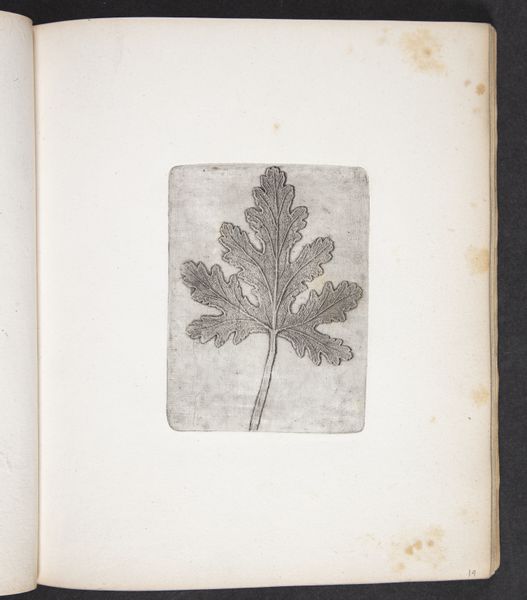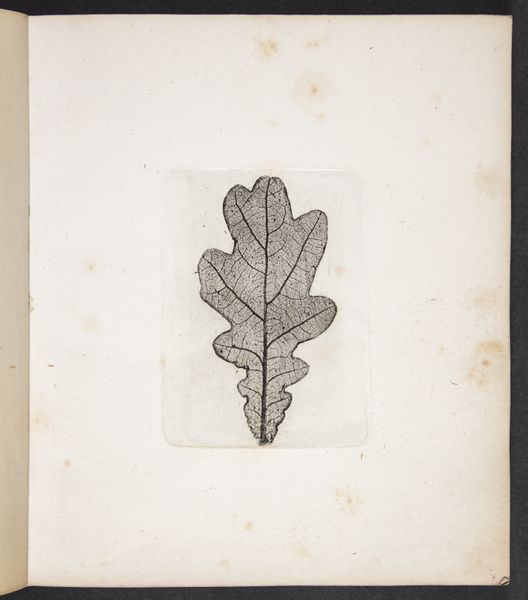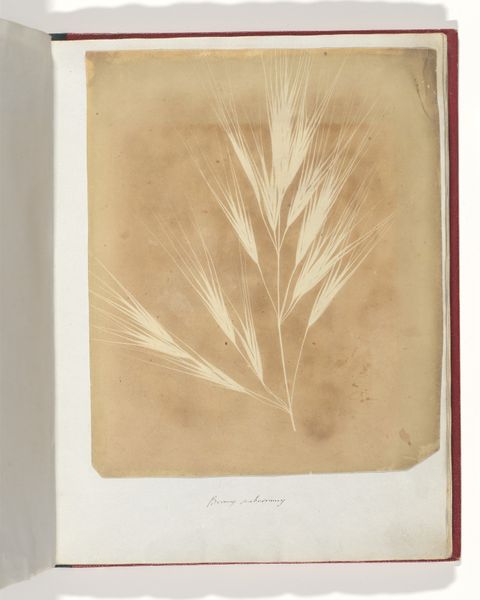
drawing, print, paper, ink
#
drawing
#
16_19th-century
# print
#
paper
#
form
#
ink
#
coloured pencil
#
line
#
naturalism
#
realism
Dimensions: 207 mm (height) x 182 mm (width) (Bladmål), 110 mm (height) x 76 mm (width) (Plademål)
Editor: We are looking at "Aftryk af blad", or "Imprint of a Leaf", made in 1833 by Peter Larsen Kyhl. It appears to be a print on paper. The delicate lines are fascinating; what strikes me is how modern it feels for something made so long ago. What do you see in this piece? Curator: Well, beyond its undeniable aesthetic appeal, it speaks volumes about the shifting relationship between art, science, and societal values in the 19th century. Consider the period: burgeoning scientific inquiry fueled a fascination with documenting the natural world. Was Kyhl simply representing nature, or was he engaging with the Linnaean tradition of classifying and understanding the natural world through detailed representation? Editor: That’s a very different angle than just "pretty leaf." So, the very act of documenting nature becomes a kind of scientific, or perhaps even political, statement? Curator: Precisely! The museum itself, as an institution, was also solidifying its role in shaping public understanding. Museums chose what was important, and determined how it should be seen. Placing a work like this in a museum elevated the seemingly mundane – a leaf – to the realm of artistic and cultural significance. Is this work displayed open or within the book format? Editor: In the display I saw it flat. Curator: It's a choice to show a print originally placed inside a book opened instead, this brings into question ideas around revealing knowledge as well as challenging art making, perhaps more for us now than audiences from the 1800's. Editor: I hadn’t considered all of that! It is fascinating how context shifts your perception of the piece. Thanks so much for sharing. Curator: My pleasure. I find myself now reflecting on how much of our viewing of nature comes through reproductions.
Comments
No comments
Be the first to comment and join the conversation on the ultimate creative platform.
